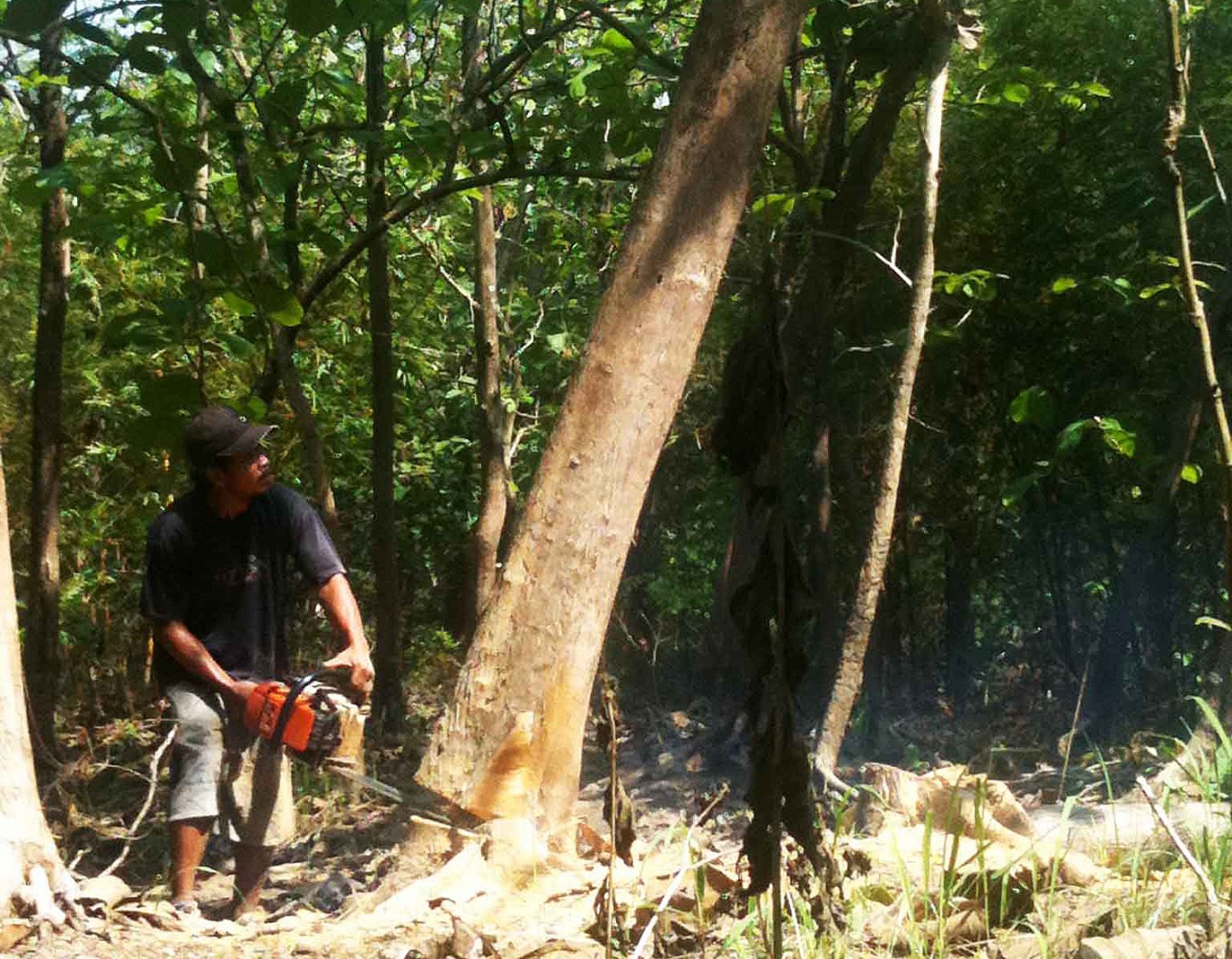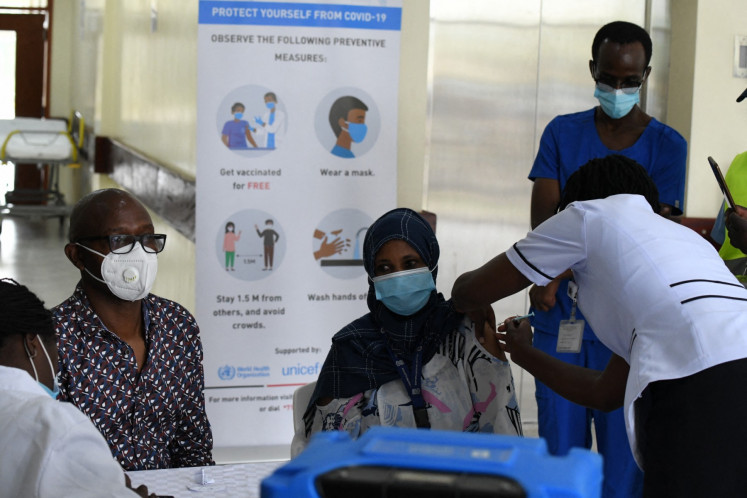Popular Reads
Top Results
Can't find what you're looking for?
View all search resultsPopular Reads
Top Results
Can't find what you're looking for?
View all search resultsSocial forestry: Where are we now?
The event took place more than a year after the launch of the Indonesian government’s ambitious program targeted at allocating 12.7 million hectares of forests to be managed by communities through social forestry schemes, which includes hutan kemasyarakatan (community forestry), hutan desa (village forests), hutan tanaman rakyat (community plantation forests) and hutan adat (customary forests), as well as forming partnerships for collaborative forest management.
Change text size
Gift Premium Articles
to Anyone
A
s a celebration of social forestry initiatives in Indonesia, a festival showcasing stories of community-managed forests around the archipelago was held in Jakarta last week by the Ministry of Environment and Forestry (MoEF).
The event took place more than a year after the launch of the Indonesian government’s ambitious program targeted at allocating 12.7 million hectares of forests to be managed by communities through social forestry schemes, which includes hutan kemasyarakatan (community forestry), hutan desa (village forests), hutan tanaman rakyat (community plantation forests) and hutan adat (customary forests), as well as forming partnerships for collaborative forest management.
The target has been part of the government’s five year plan (2015-2019), which means that there should be more than 2.5 million hectares of forests allocated for communities each year.
Long advocated by communities and environmental activists, social forestry was initiated in Indonesia in the early 1990s. The government’s more concerted and measurable efforts to ensure communities’ secured access to forests has been widely praised.
Expectations have been high for social forestry initiatives not only to clarify forest tenure arrangement—hence solving longstanding forest tenure conflicts – but also as a means to alleviate poverty. In this regard, this commitment in forestry management has been related to President Joko “Jokowi” Widodo’s “Nawacita Agenda 7”: to achieve economic independence by focusing on strategic domestic economic sectors.
Moreover, in the context of Indonesia’s target to mitigate climate change, this commitment has been promoted as an inclusive pathway to reduce greenhouse gas emissions. Many researchers have noted that clear forest tenure arrangements are a necessary requirement to ensure the success of climate mitigation initiatives, such as Reducing Emissions from Deforestation and Forest Degradation (REDD+).
Now, more than a year since the target was launched, it is time to reflect back on the program’s progress and what challenges still persist to achieve the goal by 2019. Based on data from forest tenure working groups in April 2016, the government, in cooperation with civil society groups, has identified the location of around 13 million hectares of forest areas that can potentially be allocated to community management. Nevertheless, communities will still need to go through long arduous bureaucratic procedures before they can actually manage the forest; this could take several years.
Oftentimes, the bureaucracy and varied interests across different levels of government also have a strong influence on permit issuance.
Therefore, it is not surprising that from 2007-2014, the government’s target to allocate around 1.4 million ha of forest for communities fell short, achieving a mere 22 percent success rate resulting in the allocation of only 308,451 hectares of forest area for communities.
There are several important notes that need to be taken into consideration to push forward the social forestry agenda in Indonesia.
First, simplify the bureaucratic procedures to obtain permits. Currently, the MoEF is preparing a new regulation to speed up the permit process. However, until the regulation is issued and takes effect, it will not be an easy task to achieve such an ambitious target in the next four years.
In addition, incentive/disincentive structures and coordination among different government levels needs to be established and improved to stimulate the progress of social forestry initiatives. Oftentimes, different priorities and political agendas, particularly at the district and provincial level, have hampered the process of obtaining permits.
Second, with regards to poverty alleviation, a study carried out by the Indonesian Institute of Sciences (LIPI) in 2014 shows several case studies in which social forestry initiatives have significantly contributed to local economic development. For instance, community members in Kalibiru, Kulon Progo district have benefited from an ecotourism initiative over their community forests that generate a shared income of around Rp 2.4 billion per year. Unfortunately, such findings are not evident across the board. In some cases, communities still have difficulty obtaining tangible benefits from forest resources.
Third, getting a social forestry permit is not the end in itself. Rather, it needs to be positioned as an entry point for broader community empowerment in forest management. To the date, most efforts, be it from government, NGOs or donor communities, have focused on enabling the communities to get the formal permits.
Nevertheless, research shows that the ability of communities to get benefits from natural resources is also determined by a range of other factors, such as access to information, market, decision-making process or even networks. Therefore, more holistic support is needed for the communities once they obtain their permits, to enable fuller benefits from the social forestry initiative.
Finally, social and gender safeguards need to be taken into account when implementing social forestry initiatives. My previous assessments on community forestry initiatives in several provinces in Indonesia show that forest management institutions at the local level are still dominated by male community members, and women’s participation in all phases of forest management and decision-making processes remains minimal. It is important to note that communities are not homogenous entities.
There are different social, economic and gender groups within communities that influence the ability to access resources from the forest. Without careful social and gender safeguards, such social forestry initiatives might benefit the elite and further marginalize some groups in the communities, especially woman.
***
Abidah B. Setyowati, PhD is a human geographer with specialization in Political Ecology. She currently works as a biodiversity conservation and co-management advisor at USAID LESTARI.
---------------
We are looking for information, opinions, and in-depth analysis from experts or scholars in a variety of fields. We choose articles based on facts or opinions about general news, as well as quality analysis and commentary about Indonesia or international events. Send your piece to community@jakpost.com. For more information click here.










